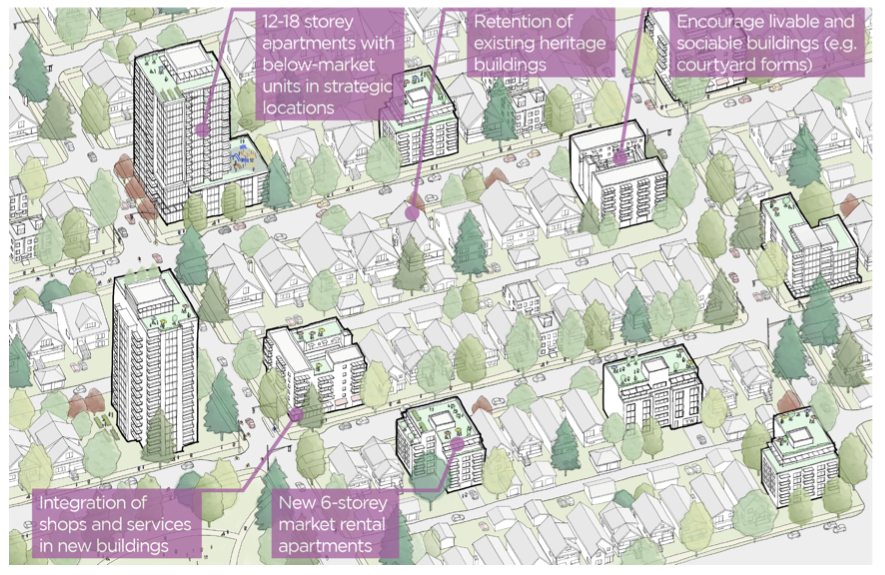The City of Vancouver is receiving a steady number of rezoning applications for development along the Broadway corridor since the previous council’s adoption of the Broadway Plan in June 2022.
A July 26 memo from city staff to council indicated that 71 projects are in the formal rezoning inquiry stage and 56 in the rezoning application stage. Another four projects are ready for approval and 14 are awaiting development permits.
Proponents of three additional projects are seeking building permits and another is awaiting an occupancy permit, according to the memo that included comments and data from deputy city manager Armin Amrolia and Josh White, the city’s new general manager of planning, urban design and sustainability.
“In summary, the number of rezoning applications is high and has continued to increase over the last year, indicating that the development opportunities enabled by the Broadway Plan are attractive even in this challenging market,” Amrolia said.
She said city hall has seen a slight decline in rezoning inquiries as the initial rush following plan approval has passed and many have progressed to the application stage. Overall, she added, this represents “significant new housing and employment stock” that will be added to the corridor over the coming years.
228 social housing units
The volume of rezoning applications has significantly increased since the previous quarter of the year, up from 46 to 56 at the end of this year’s second quarter. In 2024 to date, there has been an increase of 27 rezoning applications.
“For context, over the last five years the city has had an annual average of 76 rezoning applications submitted across the entire city,” the memo said.
Of the 149 projects in the development pipeline, 115 are residential or mixed-use residential projects, comprising a total of 21,297 residential units. Housing types break down this way:
• 228 social housing units
• 3,437 below market rental housing units
• 16,097 market rental housing units
• 1,535 strata housing units
In addition, 34 are non-residential projects and 68 are mixed-use residential projects with a non-residential component. In total, these projects comprise approximately 8.5 million square feet of non-residential space.
The memo didn’t provide addresses of the projects, but neighbourhoods primarily affected by the plan are Kitsilano, Fairview, Mount Pleasant and the southern section of False Creek Flats, where an estimated 78,000 people lived when the 2016 census was released.
Glacier Media that the former one-storey Mountain Equipment Co-op flagship store in Mount Pleasant will be redeveloped to add two towers, one 28 storeys tall and the other, 21 storeys. A total number of 514 rental apartments will be spread over the two buildings.
'Second downtown'
City staff has said in previous reports that the annual average growth rate in the area has been 1.4 per cent since 2001 and anticipates another 50,000 residents by 2050.
In that same span, an additional 42,000 jobs will be created in the area, which the plan describes as Vancouver’s “second downtown.” The plan aims to add 30,000 new homes over the next 30 years.
The development of the plan caused concern among current residents of the corridor, particularly renters worried about losing older, affordable housing to expensive highrises.
A staff report before the previous council at the time of the plan’s adoption said approximately 9,800 existing renter households in the area pay more than 30 per cent of their income on housing.
Renter protections regarding displacement are embedded in .

